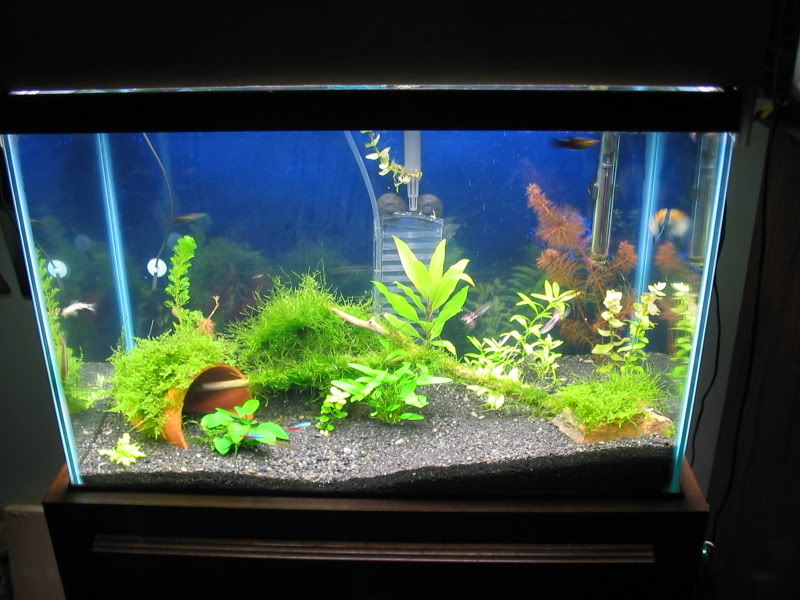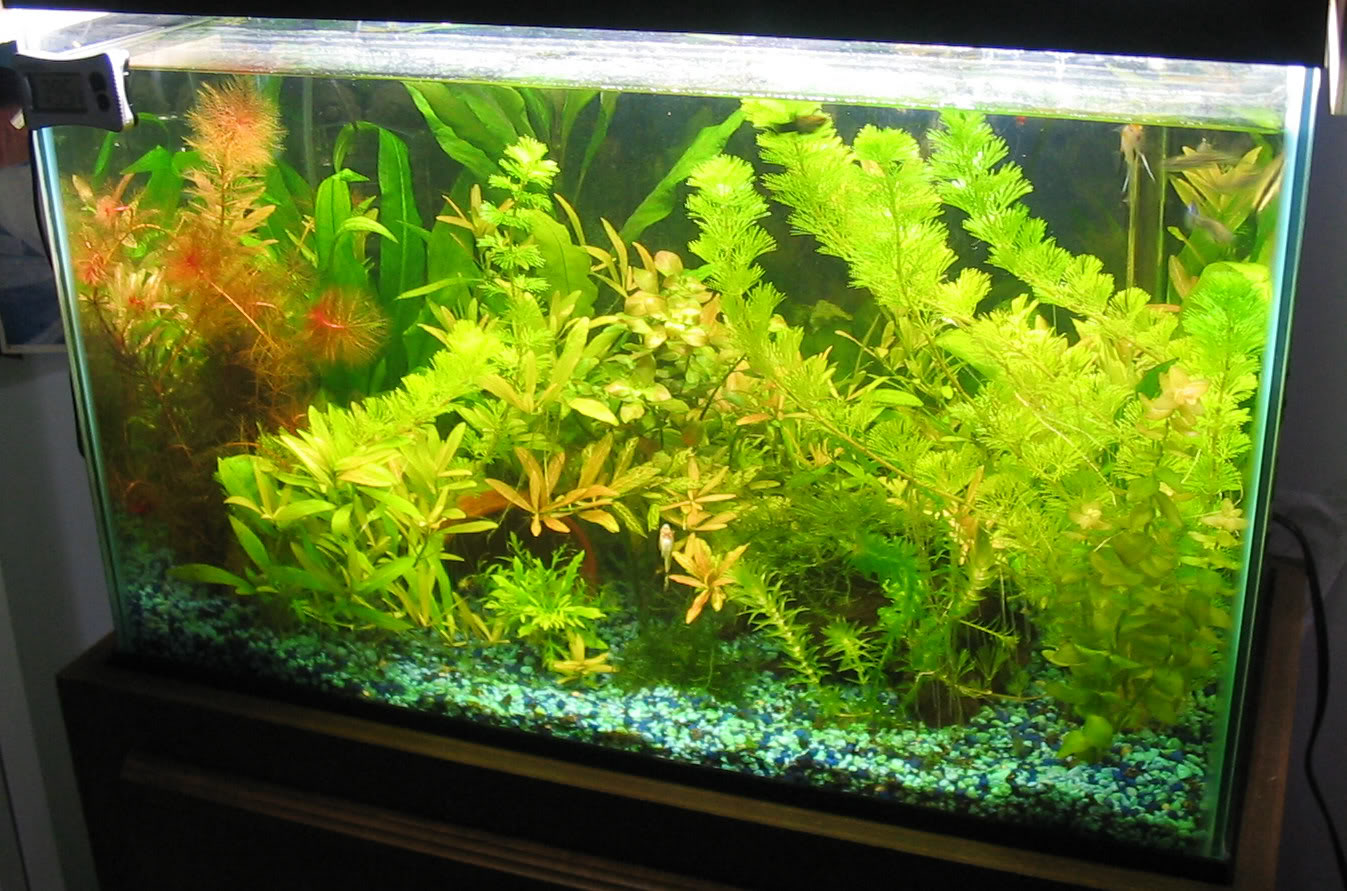mr funktastic
Aquarium Advice Addict
my tank is fine with my light at 40 watts of t-8 lighting but the second i try to add that 3rd bulb the tank goes to crap. i have a hood that i made myself that can support up to 4 24" t-8 bulbs which are 20 watts a piece. i would love to just get it up to 3 bulbs. this is over my 20 gal tank. i dont dose anything right now. i only dose flourish trace everyonce in a while. when i bump the lighting up to the 60 watts i find my nitrates bottom out. so i am going to buy some nitrogen to dose. but what else should i be looking at? i have heard most people say they dose potassium. but what else should i be looking at. i think i have asked this question a million times but its like i cant retain the answer. so can someone please suggest what i need to be dosing and how do i dose it? dose it say on the bottle how much to add to get a certain level... like dose 1 cap per 20 gal to get 1.5 ppm... the tank is a 20 gal. the light can go as high as 80 watts which would put me at 4 wpg the old way or around 5.5 WPG the new way. i would like to be at 60 watts. i have eco complete substrate. it is moderatly planted right now but will be much heavier planted soom. i have 2 2 litre bottles of DIY co2 that are producing like crazy. they are diffused by a hagen ladder then all escaping bubbles are sucked up by my aqua clear and diffused even more. here is the tank now. thanks in advance 



